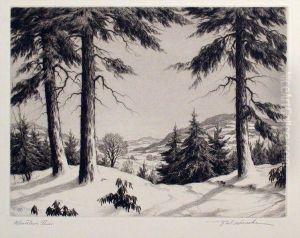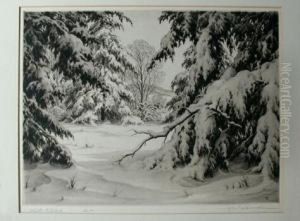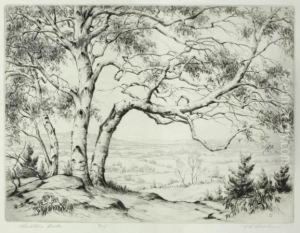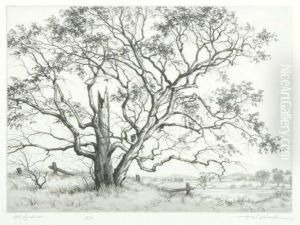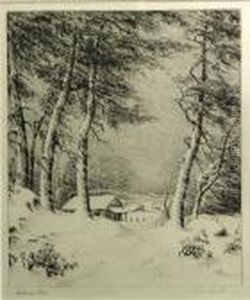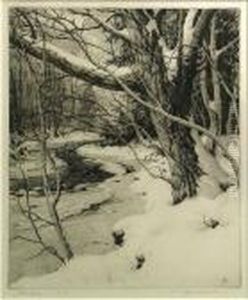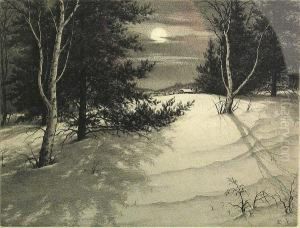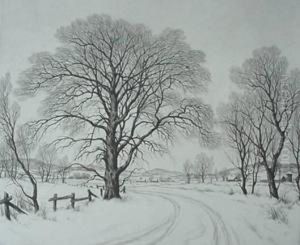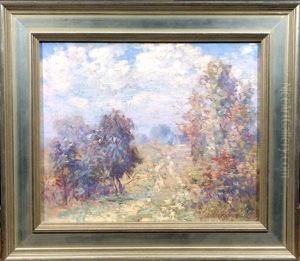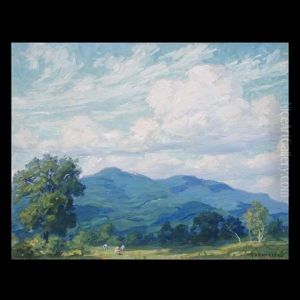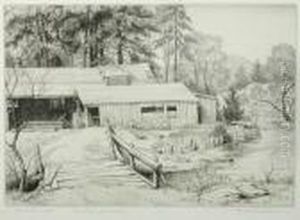Ronau William Woiceske Paintings
Ronau William Woiceske was an American printmaker and artist known for his atmospheric landscapes and winter scenes. Born on December 29, 1887, in Springfield, Massachusetts, Woiceske initially pursued a career in commercial art before dedicating himself to fine art and printmaking. His early work experience included time as a draftsman, which honed his technical skills and attention to detail that later benefited his printmaking endeavors.
Woiceske's artistic career began to flourish in the 1920s. He moved to Woodstock, New York, which was a burgeoning artist colony at the time. The natural beauty of the Catskill Mountains and the vibrant artistic community there significantly influenced his work. He became noted for his etchings and drypoints, particularly his depictions of rural America and the New England landscape under the blanket of snow. His prints often captured the quiet and serene aspects of the countryside, characterized by a subtle interplay of light and shadow.
Throughout his career, Woiceske exhibited his work widely and received considerable acclaim. He was a member of several prestigious art organizations, including the Chicago Society of Etchers and the Society of American Etchers, where he regularly showcased his prints. His works were collected by many notable institutions such as the New York Public Library, the Library of Congress, and the British Museum.
Woiceske's approach to printmaking was meticulous, and he often worked directly on the copper plate in the outdoors to capture the essence of the scene before him. This direct engagement with the landscape allowed him to create prints with a sense of immediacy and atmospheric depth. His winter scenes, in particular, are celebrated for their ability to evoke the chill and stillness of the season.
Ronau William Woiceske continued to produce art until his death on January 31, 1953. His legacy lives on through his evocative prints that continue to be admired for their beauty and technical proficiency. Woiceske's work remains an important part of the American printmaking tradition, capturing the enduring charm of the rural American landscape during the first half of the 20th century.
